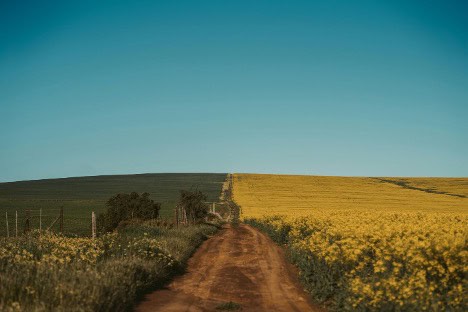Western Cape: Spring flowers and your road-trip guide to an annual spectacle

(Director’s note: Due to an illness that jumped on me Sunday, I am postponing Part 3 of my Turkmenistan blog and Wednesday’s trip to Armenia. In today’s blog, Scotland-based guest blogger Sophia Smart pinch hits with an adventurous story about traveling along the Western Cape in South Africa. Look for my final Turkmenistan installment next Tuesday.)
The season seems to arrive overnight. One week the wind still bites off the Atlantic, the next you are driving past fields that look painted by hand. The show depends on sunshine and recent rain, which is why locals learn to be flexible. Aim for clear days, set your expectations to wonder and plan a route that lets you linger when the flowers are at their best.
Western Cape how to get there
Most travelers head north from Cape Town on the R27 or N7, breaking the journey with farm stays, beach towns and wine estates. Evenings become part of the experience. You might light a braai, settle into a small-town restaurant or stay at a resort with its own entertainment.
For some, that entertainment is more digital, from streaming a film in a guesthouse to dipping into the wider world of iGaming. One option is platforms where you can win real money online slots Australia, which bring together free games, reviews and trusted casinos, showing how leisure has become as global and portable as a playlist on your phone.
If you do choose this before setting off on your journey up the West Coast of South Africa, remember to keep it optional, keep it responsible and keep the flowers as the star of the show.
When to go and how to see them
Namaqualand usually peaks first in late July and early August. The Cederberg and Nieuwoudtville follow and the West Coast often reaches its best displays in late August and early September. Flowers open with warmth, so plan your viewing between late morning and mid-afternoon and try to travel with the sun behind you. That way you see the flowers facing you rather than turned away.
If the sky turns gray or rain drifts in, the flowers stay closed. Those days are a chance to explore something different, from rock art in the Cederberg to a seafood lunch on the coast, rooibos farms around Clanwilliam or a tasting in Darling.
The must-see places
West Coast National Park (Postberg)
For two short months a year, the Postberg section opens and spreads carpets of orange, yellow and white against the blue of Langebaan Lagoon. Drive slowly, stop at viewpoints and bring a picnic. Lines can be long on weekends so aim for a weekday if you can.
Darling and the Swartland
An hour from Cape Town, farm roads near Darling light up with color. Grotto Drive is a favorite and you can combine the flowers with a tasting at a local wine farm before rolling on to town.
Namaqua National Park
Further north the landscape changes to red sand and granite outcrops before exploding into color after winter rain. Skilpad is the best choice for walking trails and wide views, while the coastal section offers a wilder side. Sedans reach Skilpad and seasonal loops, but a 4×4 opens more of the park.
Nieuwoudtville and the Bokkeveld Plateau
This is bulb country and farms open gates for day visitors. The variety is unmatched and the area feels different to the daisy fields further south. If accommodation in town is full, you can base yourself in Clanwilliam and day trip over Botterkloof Pass when the weather is clear.
Read the landscape like a local
Flowers face the light. Plan your loops so you are looking south in the middle of the day, west in the morning and east in the afternoon. Gravel detours often reward you with better views than main roads. Carry water, sunscreen and a hat because the sun can be strong even when the air is cool.
Do the right thing and keep the magic intact
Stay off the flower veld. Foot traffic crushes fragile plants and disturbs snakes that thrive in this season. Use pull-offs, marked paths and picnic spots. Do not pick flowers. Take the photo and leave the color for the next visitor. If you see a flower booklet at a gate, buy it. You will learn the names and support the people who look after the land.
Make it a bigger trip
When you have had your fill of blooms, extend the adventure beyond flower country. Follow the R27 south for the fishing villages and beaches of the West Coast, then curve inland to the vineyards of the Swartland or the rooibos heartland of Clanwilliam. From there the route carries you back to the ocean through Hermanus and on to the Garden Route if time allows. Spring is whale season off Walker Bay and the forests around Knysna are at their freshest, making this a natural continuation of the journey.
Planning tips
Aim for late July to early August in Namaqualand and late August to mid-September on the West Coast. The best hours are between 10:30 and 16:00 on sunny days. Expect lines at West Coast National Park on weekends, so book accommodation in advance.
Spring in the Cape is never guaranteed perfection. That is part of its charm. You give the season a window, the weather a say and the road a chance to surprise you. When the sun breaks and the fields turn their faces toward it, you will understand why people chase this show across valleys and years. It is a fleeting, generous bloom that makes the whole journey worth it.

